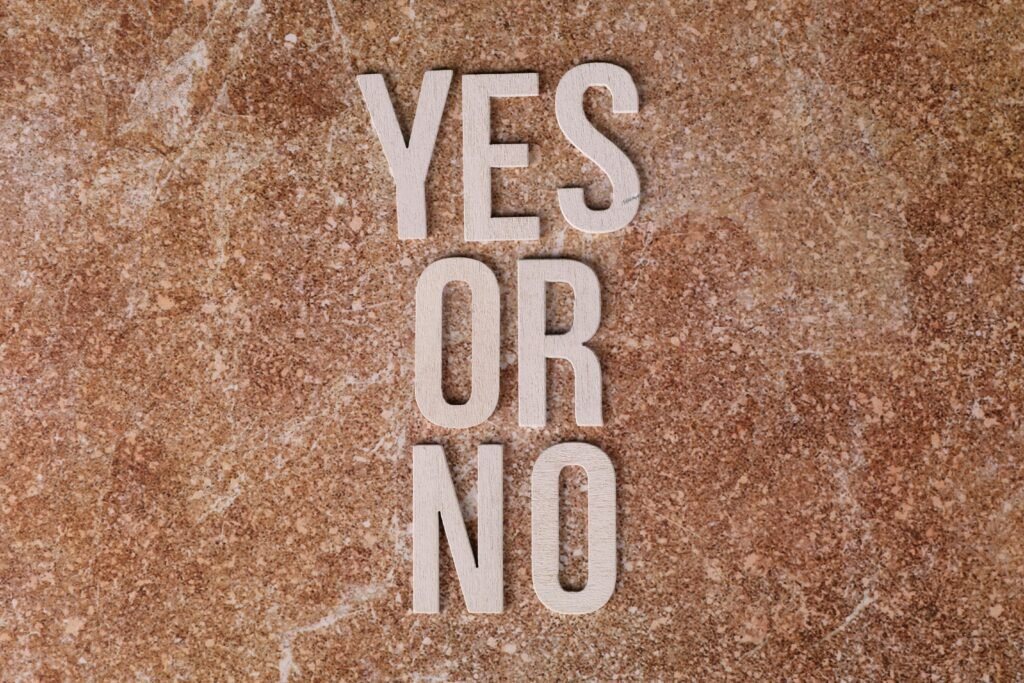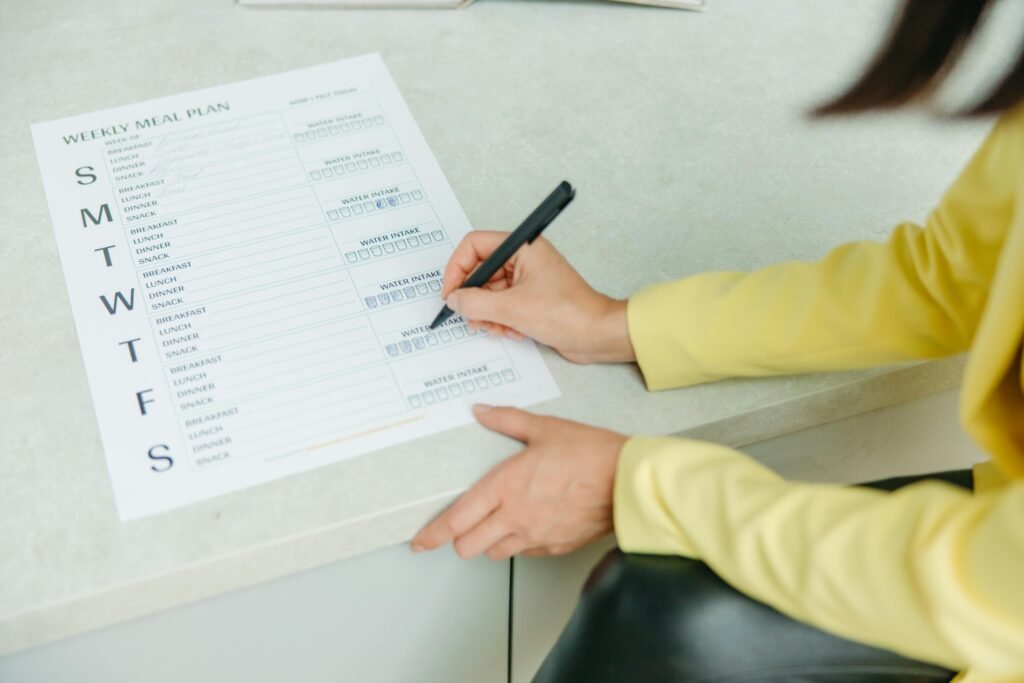
Introduction to Decision Avoidance
In the whirlwind pace of today’s world, the sheer volume of decisions we face can be daunting.
From the trivial to the significant, choices demand our attention at every turn, often leading to a state of mental exhaustion known as decision fatigue.
This overwhelming sensation has driven many individuals to explore decision avoidance as a practical coping strategy.
Instead of confronting every choice, some prefer to circumvent the pressure and potential stress altogether.
The psychology behind decision avoidance is fascinating.
For many, the fear of making the wrong choice can be paralyzing, fostering anxiety and self-doubt.
By opting to avoid decisions, they can sidestep these uncomfortable emotions.
This method also minimizes the constant mental energy required to evaluate options and outcomes, providing a sense of respite in a world that never stops demanding answers.
Interestingly, decision avoidance isn’t just about dodging decisions; it can also be a way to simplify life.
Some people adopt structured routines to minimize the number of choices they need to make each day.
This can include everything from meal prepping to planning outfits in advance, thus reducing the daily cognitive load.
Another intriguing aspect is the reliance on others for decision-making.
Trusting friends, family, or colleagues to make choices can offload the burden, allowing one to focus on other aspects of life without the constant drain of weighing pros and cons.
This delegation can be particularly appealing for those prone to overthinking, providing them with a buffer against the stress of indecision.
Decision avoidance also intersects with technology in interesting ways.
Tools and apps designed to automate routine tasks are increasingly popular.
Automatic bill payments, calendar reminders, and meal planning apps can significantly reduce the number of decisions one needs to make, offering a streamlined approach to daily life.
While decision avoidance can offer short-term relief, it’s essential to recognize its complexities and nuances.
This strategy can create a sense of calm and order, but it’s crucial to be aware of the potential long-term impacts on personal growth and relationships.
Balancing the need for mental peace with the necessity of making certain decisions is an ongoing challenge.
Understanding the roots and techniques of decision avoidance can provide valuable insights into managing our decision-making processes more effectively.
The Appeal of Avoiding Decisions

Many individuals are drawn to the practice of decision avoidance because it offers immediate relief from the anxiety and pressure that accompany decision-making.
This method provides a way to sidestep the fear of potential mistakes, reducing the overall mental burden.
By removing the need to constantly evaluate options, decision avoidance can significantly lower stress levels.
This approach is particularly appealing to those who experience paralysis by analysis, where overthinking each choice leads to inaction.
When faced with countless options, the simplest way to avoid the fear of making a wrong choice is to make no choice at all.
This method helps in alleviating the stress of living with indecision.
Another attractive aspect of decision avoidance is the way it frees up mental space.
By not getting bogged down in the minutiae of daily choices, individuals can focus their mental energy on more meaningful activities or aspects of life.
This sense of relief is especially valuable in a world where every moment seems to demand a decision, from what to eat for breakfast to which career path to follow.
Decision avoidance also taps into the social aspect of our lives.
Relying on trusted friends, family members, or colleagues to make decisions can offload some of the burdens.
This delegation allows individuals to focus on other tasks without the constant drain of weighing pros and cons.
Moreover, the advent of technology has made decision avoidance more accessible.
Automated systems and apps can handle routine tasks, further reducing the number of choices one needs to make.
This modern convenience allows individuals to maintain a streamlined lifestyle, minimizing unnecessary decisions.
For some, the appeal of decision avoidance lies in its ability to create a structured and predictable life.
Adopting routines and pre-planning aspects of daily life, such as meals and outfits, helps in reducing the cognitive load.
Examples of Decision Avoidance Techniques

When it comes to avoiding decisions, several practical techniques can make life easier.
One effective strategy is to establish daily routines that eliminate the need for constant decision-making.
For instance, setting a consistent meal plan or choosing your outfit the night before can help reduce the cognitive load each day.
Another technique involves relying on others for decision-making.
Delegating decisions to a trusted friend, family member, or partner can offload the stress associated with weighing options and outcomes.
This can be particularly helpful in high-stress situations or when faced with complex choices.
Leveraging technology is another modern approach to decision avoidance.
Various apps and tools can automate routine tasks, thereby minimizing the number of decisions you need to make.
Automatic bill payments, calendar scheduling apps, and even meal planning software can streamline your daily life, freeing up mental energy for other tasks.
For those who struggle with decision fatigue, prioritizing decisions can also be a useful tactic.
Focus on making decisions that have the most significant impact on your life, while deferring or automating less critical choices.
This can help manage mental energy more effectively and reduce the overall sense of overwhelm.
Additionally, simplifying your environment can contribute to fewer decisions.
Keep your workspace organized and decluttered, so you’re not constantly deciding where things should go or which items to use.
This approach not only reduces daily decisions but also creates a more calming environment.
Some people also find value in adhering to established guidelines or frameworks to make decisions.
For example, following a specific diet plan or adhering to a financial budget can reduce the number of choices you need to make daily.
These frameworks can serve as default settings, making it easier to navigate through daily life without getting bogged down by options.
Lastly, consider the power of habits.
Developing positive habits can significantly cut down on the need for decision-making.
Once an activity becomes a habit, it requires less conscious thought, thereby reducing mental fatigue.
Whether it’s a morning exercise routine or a specific bedtime ritual, habits can provide structure and predictability, making it easier to navigate your day without constantly having to decide what to do next.
Consequences of Never Making a Decision

While avoiding decisions can offer short-term relief, it can also lead to significant downsides.
One potential consequence is missed opportunities.
By never making a decision, individuals might pass up chances for personal growth, career advancements, or new experiences.
Chronic indecision can also strain relationships, as partners, friends, or colleagues may become frustrated with the lack of direction.
Chronic indecision can erode self-confidence.
When decisions are continuously deferred, the ability to trust one’s judgment diminishes.
This can lead to a cycle of hesitation and self-doubt that becomes increasingly difficult to break.
It’s not uncommon for individuals who frequently avoid decisions to feel stuck, as though they are unable to move forward in life.
In a professional context, perpetual indecision can stunt career growth.
Employers and colleagues may perceive indecisiveness as a lack of leadership or commitment, which can limit opportunities for advancement.
The inability to make timely decisions can result in missed deadlines and stalled projects, ultimately affecting overall performance and job satisfaction.
On a personal level, the habit of avoiding decisions can create an environment of uncertainty and instability.
Loved ones may feel unsupported or burdened by having to take on the decision-making role, leading to resentment and tension.
Relationships thrive on mutual respect and shared responsibility; when one person consistently avoids making decisions, it can disrupt this balance and strain the relationship.
Furthermore, decision avoidance can exacerbate mental health issues.
The ongoing stress of indecision can lead to increased anxiety, making it even more challenging to make future decisions.
This can create a vicious cycle where the fear of making a wrong choice becomes overwhelming, leading to further avoidance and increased stress.
Tips to Practice Mindful Decision Avoidance

Incorporating mindful decision avoidance into your daily life requires a strategic approach.
Start by identifying areas where you can streamline or eliminate unnecessary choices.
Meal prepping is a practical example; by planning and preparing meals in advance, you remove the daily dilemma of deciding what to eat.
This not only saves time but also reduces the cognitive load associated with frequent decision-making.
Utilize technology to automate routine tasks.
For instance, set up automatic bill payments to avoid the hassle of remembering due dates each month.
Calendar apps can also help by organizing your schedule and sending reminders for important tasks, freeing up mental space for more significant decisions.
Another effective technique is establishing routines.
By creating consistent patterns in your day-to-day activities, you minimize the number of choices you need to make.
For example, having a set morning routine can help you start your day without the stress of deciding what to do first.
Similarly, laying out your clothes the night before can make mornings smoother and less mentally taxing.
Delegation is also a valuable tool in mindful decision avoidance.
Trusting friends, family, or colleagues to make certain decisions can offload some of the burdens, allowing you to focus on more critical areas.
This approach is particularly useful in high-stress situations where making a decision feels overwhelming.
Simplifying your environment can contribute significantly to reducing the number of decisions you need to make.
Keep your workspace organized and clutter-free to avoid constant decisions about where to find things or which items to use.
This creates a more calming environment and helps you stay focused on more important tasks.
Developing habits is another key strategy.
Once an activity becomes a habit, it requires less conscious thought, thereby reducing mental fatigue.
Whether it’s a daily exercise routine or a specific bedtime ritual, habits provide structure and predictability, making it easier to navigate your day without constantly having to decide what to do next.
Adopting established guidelines or frameworks can also be beneficial.
For example, following a specific diet plan or sticking to a financial budget reduces the number of daily decisions you need to make.
These frameworks act as default settings, allowing you to focus your mental energy on more meaningful aspects of life.
By thoughtfully integrating these strategies into your routine, you can effectively practice mindful decision avoidance, maintaining control over your life while minimizing unnecessary stress.
Balancing Decision Avoidance with Necessary Choices

While decision avoidance can be beneficial, it’s crucial to recognize when a decision is unavoidable.
Certain choices require your active involvement, such as those impacting your career, health, or relationships.
In these cases, developing strategies to cope with decision fatigue is vital.
One approach is prioritizing decisions based on their impact and urgency, focusing your energy on the most significant ones.
Cultivating these traits can help build confidence in decision-making and reduce the tendency to avoid necessary choices.
In moments where you can’t avoid a decision, breaking it down into smaller, manageable steps can make the process less daunting.
For example, if you’re facing a significant career choice, start by listing the pros and cons, gathering information, and seeking advice from trusted mentors.
This structured approach can make the decision-making process more transparent and less overwhelming.
Another effective method is setting a time limit for making a decision.
This can prevent overthinking and help you take action more quickly.
When faced with a choice, give yourself a reasonable deadline to gather information and make a decision, which can reduce the anxiety associated with prolonged indecision.
Incorporating self-care practices can also support better decision-making.
Regular exercise, adequate sleep, and mindfulness techniques can improve your overall mental state, making it easier to tackle decisions with a clear mind.
When you’re physically and mentally well, you’re more likely to approach decisions with confidence and clarity.
Additionally, consider seeking professional support if decision-making becomes too challenging.
Therapists and life coaches can provide valuable tools and techniques to help you navigate complex choices.
They can offer a different perspective and assist in developing strategies to make decision-making less stressful.
It’s also helpful to reflect on past decisions and their outcomes.
Understanding what worked and what didn’t can provide insights into your decision-making patterns and help you develop more effective strategies moving forward.
This reflection can build your confidence and improve your ability to make decisions in the future.
By integrating these approaches, you can better manage decision fatigue and make necessary choices more effectively, while still reaping the benefits of decision avoidance when appropriate.
Conclusion: Is Never Making a Decision Right for You?

Deciding whether decision avoidance is a suitable strategy for you requires a thoughtful evaluation of your lifestyle and goals.
On the surface, the allure of escaping the constant barrage of choices can be quite tempting, offering immediate relief from mental fatigue and anxiety.
However, it’s essential to recognize that this approach also comes with potential pitfalls.
For many, the ability to bypass daily decisions can free up significant mental resources, allowing for greater focus on more meaningful activities.
By implementing routines, leveraging technology, and delegating decisions to trusted individuals, you can create a more streamlined and less stressful daily life.
These techniques can be particularly beneficial for those who experience paralysis by analysis, providing a much-needed respite from the relentless demand for choices.
Yet, it’s crucial to acknowledge the other side of the coin.
Avoiding decisions entirely can lead to missed opportunities for personal growth, career advancements, and enriching experiences.
Chronic indecision can also strain relationships and erode self-confidence, leading to a cycle of hesitation and self-doubt.
It’s essential to balance decision avoidance with active decision-making in areas that significantly impact your life, such as your career, health, and relationships.
To determine if decision avoidance aligns with your needs, consider your overall goals and the specific contexts in which you experience decision fatigue.
Are there areas where you can simplify and automate to reduce cognitive load?
Are there critical decisions that you can’t afford to defer?
Understanding these distinctions can help you apply decision avoidance strategically, enhancing your quality of life without sacrificing opportunities for growth.
Ultimately, the key lies in finding a personalized balance that suits your unique circumstances.
By integrating mindful decision avoidance techniques while remaining open to making necessary choices, you can enjoy the benefits of reduced stress and mental clarity.
Regularly reassess your approach to ensure it continues to align with your evolving needs and aspirations.
This balanced strategy can help you navigate life’s complexities with greater ease and confidence, empowering you to focus on what truly matters.
